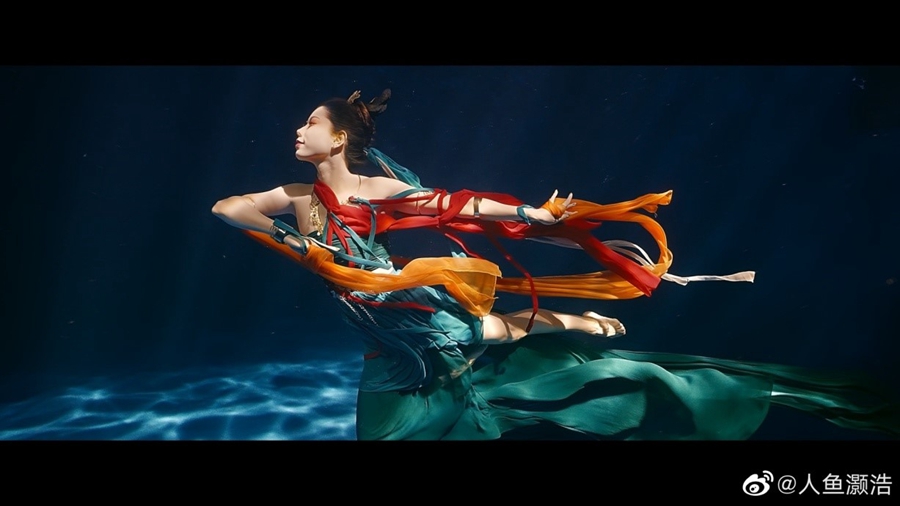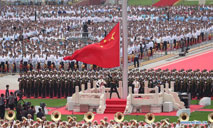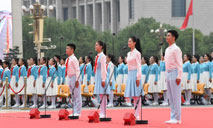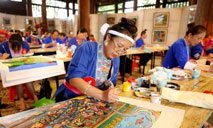Innovation gives renewed vigor to traditional Chinese culture (4)
 |
| A frame of the gorgeous underwater traditional Chinese dance that reproduced a character from the famous ancient Chinese painting Ode to the Goddess in Luo. (Photo from the Weibo account of the performer) |
Nowadays, Chinese consumers can “excavate items” from archaeological blind boxes with an exquisite imitation of Luoyang shovels; traditional Chinese culture shows and videos are all over social platforms; more and more Chinese people visit museums on holidays; and major archaeological discoveries frequently become hot topics online.
Creative transformation and innovative development have made fine traditional Chinese culture increasingly integrated with the daily lives of people, and continuously brought surprises to people.
The fact is more and more people have shown an interest in the ingenious and innovative interpretation of excellent traditional Chinese culture.
Recently, a gorgeous underwater traditional Chinese dance has attracted wide attention. It reproduced a character from the famous ancient Chinese painting Ode to the Goddess in Luo, the daughter of a heavenly sovereign character Fu Xi in Chinese mythology who drowned and then became a goddess.
With stunning stage design and graceful movements, the performance, which lasted for less than two minutes, has won unanimous high praise from Internet users. The shooting of the performance wasn’t easy, though. To carry out the artful design of the choreographer, the performer spent 26 hours underwater for the shooting, and had to swim into and out of the water 200 times and carry a few kilograms of counterweight.
It is because of the combination of creativity and technologies that the ancient painting in museum has burst with vitality and new ideas and won the respect and affection of more people.
The Chinese people have gradually developed a great enthusiasm for traditional Chinese culture and continuously improved their aesthetic qualities.
From cultural relic memes and cultural relic-shaped ice creams to the heated discussions on new discoveries at the Sanxingdui Ruins and the rising sales of cultural and creative products, traditional Chinese culture has enjoyed increasing popularity in recent years, mirroring the active participation of the public in related activities.
Out of enthusiasm for museums, some people decided to become a cultural relic photographer and travel back in time with cameras; to immerse themselves in traditional architecture, some began to reproduce classical designs with tenon and mortise technique; and some have learned about intangible cultural heritage from masters to feel the charm of ancient skills. The Chinese people now have more accesses to appreciating the beauty of traditional Chinese culture.
Inheriting and innovation have vitalized traditional culture in history, while interaction and resonance have enabled it to shine brightly in the modern era.
In recent years, many innovation endeavors have won cheers and applause from young people by tapping into traditional Chinese culture.
The show China in Classics allows viewers to learn about Chinese classics in an immersive way; the TV program National Treasure tells stories behind cultural relics; and the classical dance program Palace Banquet in Tang Dynasty brought young girls in ancient painting scrolls “back to life”.
By watching these shows, giving likes, and leaving comments, viewers have become appreciators and promoters of traditional Chinese culture. While viewers wander around in a cultural treasury, ancient culture has weathered the time and shown renewed vigor.
By making classic works that embody the wisdom of sages and cultural relics popular and come alive, viewers are able to “travel back in time” to “communicate” with ancient figures, and the nation can achieve continuous cultural development.
 |
Photos
Related Stories
Copyright © 2021 People's Daily Online. All Rights Reserved.










